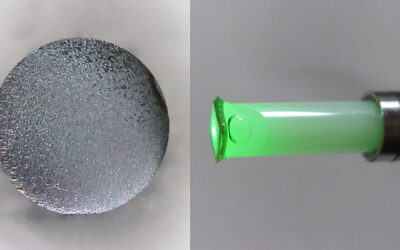Research from a team led by North Carolina State University is opening the door to smarter sensors by integrating the smart material vanadium dioxide (VO2) onto a silicon chip and using lasers to make the material magnetic. The advance paves the way for multifunctional spintronic smart sensors for use in military applications and next-generation spintronic devices.
VO2 is currently used to make infrared sensors. By integrating VO2 as a single crystal onto a silicon substrate, the researchers have made it possible to create infrared smart sensors, in which the sensor and computational function are embedded on a single chip. This makes the sensor faster and more energy efficient, since it doesn’t have to send data to another chip to be processed. Smart sensors are also lighter than conventional ones, since separate chips aren’t necessary.
“For military applications, sensor technology needs to be able to sense, manipulate, and respond to data quickly – and this work achieves that,” says Dr. Jay Narayan, John C. Fan Distinguished Chair Professor of Materials Science and Engineering at NC State and senior author of a paper describing the work.
In addition, the researchers used high-power nanosecond-pulsed laser beams to modify the VO2 and make it magnetic. This will allow the creation of spintronic smart sensors that incorporate infrared sensors and magnetic sensors on a single chip. Spintronics refers to technologies used in solid-state devices that take advantage of the inherent spin in electrons and their related magnetic momentum. The potential advantages of spintronics include higher memory capacity, faster data transfer and more computational power on a computer chip.
Source: NC State University
















